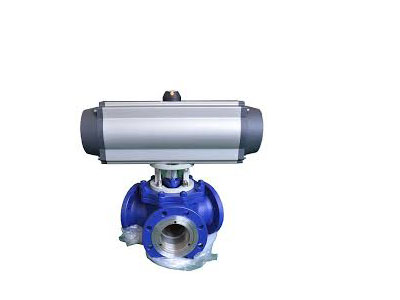Key Takeaway
Solenoids work by converting electrical energy into mechanical motion. When electricity flows through the coil, it creates a magnetic field. This field pulls or pushes a metal plunger, opening or closing a valve.
It’s a simple yet effective mechanism used in many applications. Understanding the basic working of solenoids helps in troubleshooting. The plunger movement is what controls the action. If a solenoid doesn’t work, checking the power supply and coil is a good start. Proper maintenance ensures they work efficiently. Solenoids are integral in many automated systems.
The Basics of Electromagnetic Operation
Solenoids operate on the principle of electromagnetic induction, converting electrical energy into mechanical motion. When current flows through the solenoid’s coil, it generates a magnetic field that moves the armature or plunger.
This movement is harnessed to perform tasks such as opening or closing a valve, creating a simple yet effective mechanism for controlling systems. Electromagnetic operation is valued for its precision and reliability, making solenoids integral to applications ranging from household appliances to industrial automation, where precise motion control is critical for optimal performance.

Understanding Solenoid Components and Structure
A solenoid valve consists of several key components that work together to regulate fluid or gas flow. At the heart of the solenoid valve is the coil, which generates a magnetic field when electricity flows through it. This magnetic force drives a plunger or armature inside the valve, either opening or closing the valve. The plunger is typically made of ferromagnetic material, allowing it to move in response to the magnetic field generated by the solenoid coil.
The valve also includes a housing that contains the solenoid mechanism and other internal parts such as springs and seals. These components ensure that the valve operates smoothly and remains leak-proof under varying pressure and temperature conditions. The coil’s power rating, the spring’s tension, and the sealing material are all critical factors that determine the solenoid valve’s durability, performance, and suitability for different applications.
For engineers working with solenoid valves, it’s essential to understand the internal components and structure, as this knowledge allows for proper selection, installation, and maintenance. Regular inspection of the coil, plunger, and seals can prevent valve failures, ensuring that the system remains operational and efficient for years.
How Electrical Signals Trigger Solenoid Movement
Electrical signals are the driving force behind the movement of solenoids, converting electrical energy into mechanical motion. When a current passes through the solenoid coil, it generates a magnetic field that attracts a metal plunger or core. This movement either opens or closes a valve, allowing or restricting fluid flow.
The responsiveness of solenoids to electrical signals makes them ideal for applications where precise timing and control are needed. By varying the electrical input, users can achieve different levels of movement, offering versatility in various industrial and commercial settings.
To ensure optimal performance, it’s crucial to match the solenoid’s specifications with the intended application. This includes considering the voltage and current requirements, as well as the environmental conditions. Proper installation and regular maintenance help maintain the solenoid’s efficiency and longevity, ensuring reliable operation throughout its service life.
Differences Between Linear and Rotary Solenoids
Linear solenoids and rotary solenoids are two types of electromagnetic actuators used in various applications, each offering distinct advantages. Linear solenoids convert electrical energy into linear motion, making them ideal for applications requiring straightforward push or pull actions. These solenoids are commonly used in locking mechanisms, automotive starters, and vending machines, where precise linear motion is essential for operation. Their simple design and efficient performance make them a popular choice in industries where reliability is crucial.
In contrast, rotary solenoids are designed to produce rotational motion, allowing them to perform tasks that require turning or twisting actions. They are often used in applications such as valve actuation, robotic arms, and camera shutters. The ability to produce controlled rotary motion enables these solenoids to perform complex tasks with precision, making them valuable in high-tech industries. Rotary solenoids are known for their compact size and ability to generate significant torque, making them suitable for space-constrained environments.
Despite their differences, both linear and rotary solenoids share some common features, such as fast response times and low power consumption. These attributes make solenoids an attractive choice for applications requiring quick and efficient actuation. When selecting between linear and rotary solenoids, it is important to consider the specific requirements of the application, including the type of motion needed and the available space. By understanding the unique characteristics of each solenoid type, industries can make informed decisions to optimize their systems’ performance.
Applications of Solenoid Mechanisms in Fluid Control
Solenoid mechanisms are widely used in fluid control applications due to their ability to provide precise and rapid control of fluid flow. These mechanisms are integral in managing the flow of gases and liquids in various industrial processes, ensuring efficiency and accuracy. In manufacturing, solenoid-controlled systems regulate the flow of fluids in assembly lines, maintaining consistent pressure and flow rates crucial for product quality and operational efficiency.
In the field of water treatment, solenoids play a pivotal role in controlling the various stages of the purification process. They manage the flow of water through filters, ensuring that impurities are effectively removed, and the water meets safety standards. Additionally, solenoid mechanisms are used in irrigation systems where they control the distribution of water to crops, optimizing water usage and enhancing agricultural productivity.
The medical industry also benefits from solenoid mechanisms, particularly in devices such as ventilators and dialysis machines, where precise fluid control is critical for patient safety and treatment efficacy. Overall, solenoids provide reliable and efficient solutions in fluid control applications across various industries, contributing to operational excellence and technological advancement.
Conclusion
Solenoids operate by converting electrical energy into mechanical motion through electromagnetic principles. This process enables them to actuate various mechanical components efficiently.
Their functionality highlights the simplicity yet sophistication of electromagnetic engineering, making them a cornerstone in both small-scale gadgets and large industrial machinery.
